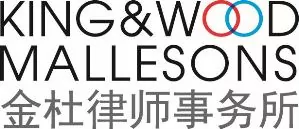Occupational diseases are defined as the diseases employees suffer due to their exposure to toxic or harmful factors such as dust and radioactive substances as a result of occupational activities. Companies should be responsible for the prevention and control of occupational disease. However, in practice, many companies usually ignore it at first and eventually pay a high price when hazards in the workplace have led to serious illness. For example, an international high-tech supplier ignored occupational health management and broke the law by using toxic solvents between 2008 and 2009, leading to 137 employees of the company poisoned by the chemical n-hexane. After the incident happened, the company was not only liable to pay huge compensation to all the affected employees but also subject to several administrative penalties, including corrections within a prescribed time limit and a large amount of fine.
Lessons learned from the past can be our future guidance. Therefore, in order to prevent and control occupational diseases, companies should face up to this issue and strengthen the occupational health management. What is "occupational healthcare" then? It is defined as "the working area for the purpose of protecting employees' health from harmful factors in occupational activities and the protective measures to be taken in law, technology, equipment, organizational system, education, etc."
In our opinion, how a company should deal with occupational health management from a legal perspective should be based on the Provisions on the Supervision and Administration of Occupational Health at Work Sites, hereinafter referred to as "Order No.47"). The main points are as follows:
1. Occupational health management department and personnel
Given that occupational health management needs powerful support, companies should first build an occupational health management department and designate responsible personnel. The question may be whether the occupational health management personnel can be designated discretionally or be held as a concurrent post.
According to Order No.47, both occupational health management personnel and the principal person in charge of the company must adequately know and be able to manage occupational health related to the company's production and business operations, and they must also receive training on occupational health. Therefore, companies should be prudent in designating occupational health management personnel.
As to whether the post of occupational health management personnel can be designated to a person who has concurrent jobs or not, it depends on the specific circumstances of each company. In accordance with the Catalogue of Classification and Management of Risks on Occupational Disease Hazards of Construction Project, the occupational disease hazards can be ranked according to their severity, i.e. severe, relatively serious and slight. Companies with severe hazards shall set up an occupational health management department and assign full-time occupational health management personnel. As for other companies with relatively serious and slight hazards, a full-time health management personnel is a must if the company has more than 100 employees and this requirement can be relaxed for companies with fewer employees.
2. Warning signs and notification of occupational hazards
To effectively prevent and control occupational disease, companies must take necessary measures, while an active participation of employees and their acceptance is also indispensable. Therefore, companies should set up warnings and notification of occupational hazards in accordance with Order No.47 to ensure employees' active involvement in occupational health management.
Firstly, companies with occupational risks must specifically inform the candidates of the hazards in the workplace during recruitment, and also post an announcement in a conspicuous location and provide employees with information about occupational health management rules, prevention processes, emergency rescue facilities and testing results of the factors of occupational hazards at workplaces. By doing so, employees can be familiar with occupational health management rules and other related requirements, so that both companies and employees can prevent occupational disease accordingly.
Moreover, employers should not take it for granted that employees have the ability to recognize the hazards that have the potential to cause an injury, an occupational disease or even death. Instead, companies should set up warning signs e.g. warning graphics, lines and sentences and explanations in Chinese in a conspicuous location for certain workplaces, posts, equipment, and facilities to warn employees to "keep from danger" or be fully prepared if an entry is necessary.
3. Occupational health training
Apart from the training courses for the principal person in charge of the company and occupational health management personnel, it is of vital importance to arrange occupational health training for all employees. Employers should inform employees of the occupational hazards as mentioned above and increase employees' awareness and ability to prevent and control occupation diseases through training courses.
Here is the question: how should occupational health training courses be arranged? In accordance with Order No.47, the training courses can be divided into three stages: pre-employment training, regular on-the-job training and special training. Employees should take pre-employment training courses before assuming their posts or when any changes in procedures, technologies, equipment or materials or post adjustments have been introduced that affect occupational hazardous factors. Moreover, regular on-the-job training is also necessary. Both of these two kinds of training courses are to disseminate knowledge of occupational health, and to supervise and urge employees to abide by laws, administrative regulations and rules on the prevention and control of occupational disease, national occupational health standards and operating procedures. In addition, special training courses are targeted at employees in positions with serious occupational hazards, and these employees may take positions only after they pass the training.
Meanwhile, the company should make sure that employees are given adequate occupational health guidance and training, and it is advisable to record the time, content, attendees and test results of each training course.
4. Proper management of protective equipment and devices
To do a good job, an artisan needs the best tools. Therefore, companies should properly manage the "tools" for occupational safety and health—protective facilities and devices. And what is so-called "proper management"?
Firstly, companies should install sufficient protective equipment to provide adequate protection. For example, companies should install alarms and put on-the-spot first-aid kits, washing equipment, emergency evacuation exits, and necessary hazard buffer zones in place at the toxic or harmful worksites where acute occupational injuries may occur. Secondly, companies should ensure the proper use of protective equipment. For that, companies should conduct routine maintenance and repairs to such protective equipment and emergency rescue facilities, and regularly test their performance and function, to ensure that they can be used properly, and shall not stop or remove them without permission.
Besides, company should provide employees with personal protective equipment. As such personal protective equipment is needed when there are hazards present and other controls are not feasible or effective enough, companies should ensure such protective equipment provided can meet the national occupational health standards and such protective equipment may not be replaced by any financial benefits. Moreover, employers should also supervise and guide their employees to correctly wear or use protective equipment and periodically maintain and repair such protective equipment and ensure their proper use.
5. Monitoring and regular evaluation
To protect employees from occupational diseases, companies should provide employees with a workplace whose conditions can meet the national occupational health standards. If the employers want to keep the conditions of workplaces in compliance with national requirements, or make an immediate response when any occupational hazard arise, they should pay attention to routine monitoring and risk assessment process.
In accordance with Order No.47, companies should designate responsible persons for the routine monitoring of factors of occupational hazards and ensure the normal operation of the monitoring system. In addition, at least once a year, the company should entrust a qualified occupational health service agency to conduct tests of factors of occupational hazards; at least every three years, employers must delegate a qualified agency to assess the current occupational hazards. Through the above-mentioned monitoring and assessment measures, the company can be fully aware of the occupational hazards in the worksites and initiate immediate responses when the conditions of workplaces fall short of the national occupational health requirements. The company may have to suspend operations related to the factors of occupational hazards if necessary until certain adjustment have been made to meet the national occupational health standards.
The company mentioned above cannot avoid such severe occupational disease incident because that it neglected the monitoring and assessment processes in occupational disease management. Therefore, the company failed to be duly informed of occupational hazards in worksites and thus was unprepared when the disease broke out. In a word, employers must try their best to monitor and assess hazards in the workplaces.
6. Occupational health examination
Apart from effective monitoring of occupational hazards, companies should pay particular attention to health examinations for employees exposed to occupational hazards. In accordance with Order No.47, companies should organize occupational health examination for employees about to take up, currently working on or leaving a job that exposes them to occupational hazards, and truthfully inform employees of the health examination results in writing.
Can annual physical examination replace occupational health examination? And how should the employees be handled who have not undergone occupational health examination or been determined medically unfit during the occupational health examination? Answers can be found in the Measures for the Supervision and Administration of Employers' Occupational Health Surveillance. Firstly, occupational health examination cannot be replaced by annual physical examination. Secondly, if the employees have not received pre-employment occupational health checks, the employer cannot assign them to the jobs that involve exposure to potential health hazards; and after the end of an assignment, if employees have not undergone occupational health examinations, the company cannot terminate their employment contracts. Furthermore, if employees have been determined unsuitable during occupational health examinations because of occupational contraindications or job-related health impairment, the company should not place workers in jobs that are not suitable for their health or assign them to other jobs.
Therefore, companies should take occupational health examination seriously. Otherwise, company's labor management will be jeopardized and the company will fail to effectively prevent and control the occupational disease hazards.
7. Reporting and assessment
Occupational health management is closely related to a company's labor management and even society at large. Thus, companies with occupational hazards should not only set up and carry out its occupational health management system, but also truthfully report projects with occupational hazards to the local authorities of work safety in a timely manner, and accept their supervision and inspection.
Besides, where a new construction, expansion, or reconstruction project or a technical improvement or technology introduction project (a "construction project") may incur any occupational hazards, the construction company should carry out pre-assessment during the process of the feasibility study to determine the category of potential hazards and protective measures. Moreover, before the final acceptance of the construction project, the company should also carry out an assessment of the control effects of occupational hazards.
In conclusion, occupational health management is a significant measure to protect employees' health. In order to prevent occupational disease hazards and ensure employees' health and production safety, companies should try their best to implement occupational health management systems.
Editor's note: this article was simultaneously published on Chinalawinsight.com
The content of this article is intended to provide a general guide to the subject matter. Specialist advice should be sought about your specific circumstances.

